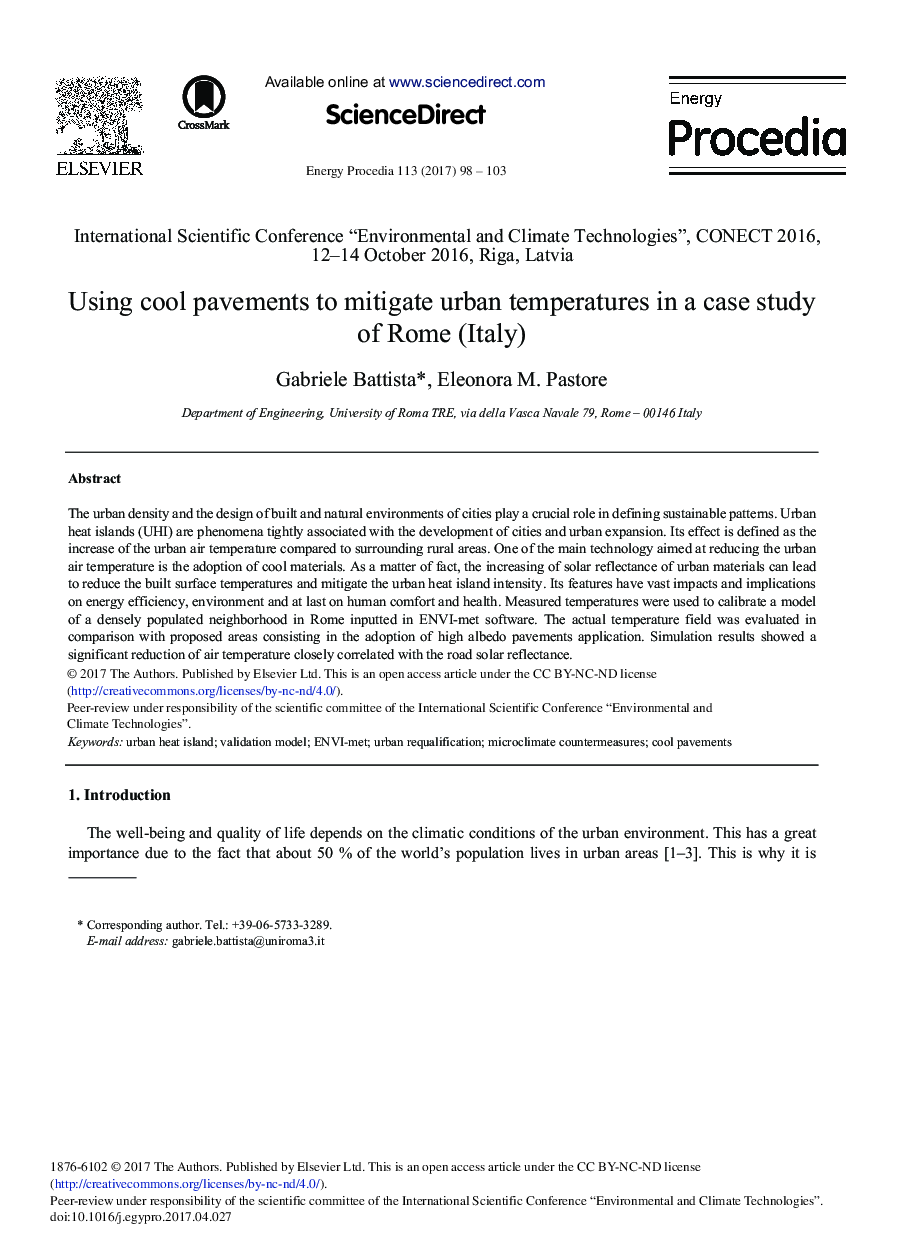| Article ID | Journal | Published Year | Pages | File Type |
|---|---|---|---|---|
| 5445633 | Energy Procedia | 2017 | 6 Pages |
Abstract
The urban density and the design of built and natural environments of cities play a crucial role in defining sustainable patterns. Urban heat islands (UHI) are phenomena tightly associated with the development of cities and urban expansion. Its effect is defined as the increase of the urban air temperature compared to surrounding rural areas. One of the main technology aimed at reducing the urban air temperature is the adoption of cool materials. As a matter of fact, the increasing of solar reflectance of urban materials can lead to reduce the built surface temperatures and mitigate the urban heat island intensity. Its features have vast impacts and implications on energy efficiency, environment and at last on human comfort and health. Measured temperatures were used to calibrate a model of a densely populated neighborhood in Rome inputted in ENVI-met software. The actual temperature field was evaluated in comparison with proposed areas consisting in the adoption of high albedo pavements application. Simulation results showed a significant reduction of air temperature closely correlated with the road solar reflectance.
Related Topics
Physical Sciences and Engineering
Energy
Energy (General)
Authors
Gabriele Battista, Eleonora M. Pastore,
